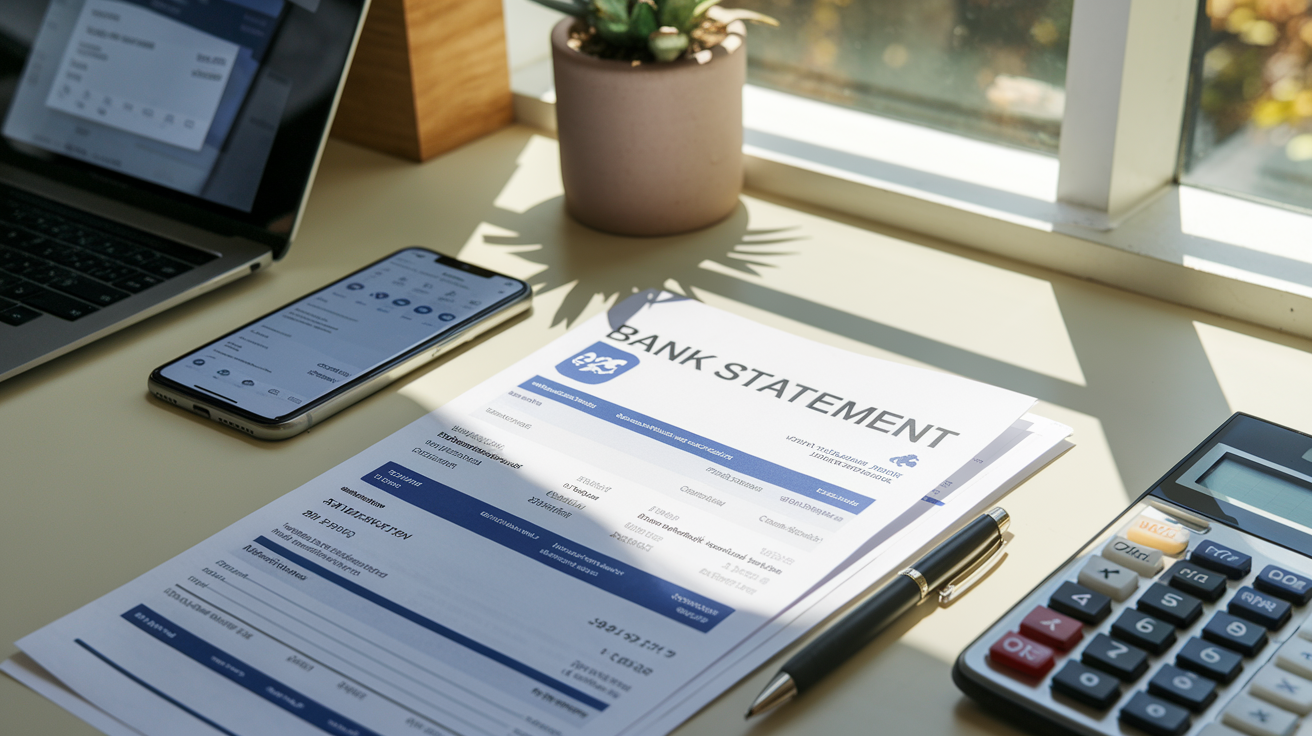Introduction
Have you ever wondered why your bank sends you those monthly statements? You know, those pieces of paper (or digital documents) that often end up in the recycling bin or forgotten in your inbox? Well, it’s time to take a closer look at these underappreciated financial records. Bank statements are more than just a list of numbers and transactions; they’re a snapshot of your financial health and a powerful tool for managing your money.
In this article, we’ll dive deep into the world of bank statements, exploring their importance, how to read them, and why they might just be your new best friend when it comes to keeping your finances in check. Whether you’re a financial whiz or someone who breaks out in a cold sweat at the mere mention of budgeting, this guide will help you understand and appreciate the value of your bank statements.
Let’s face it, most of us aren’t exactly thrilled when we see that envelope from the bank in our mailbox (or that notification in our inbox). But what if I told you that these statements could be the key to unlocking your financial potential? From tracking your spending habits to catching fraudulent activity, bank statements play a crucial role in your financial life.
So, grab a cup of coffee, get comfortable, and let’s explore why bank statements are more than just a monthly nuisance. By the end of this article, you might just find yourself eagerly awaiting your next statement!
The Anatomy of a Bank Statement
What’s in a Bank Statement?
Before we dive into the importance of bank statements, let’s break down what you’ll typically find in one. Understanding the components of your statement is the first step to using it effectively.
- Account Information: This section includes your name, address, account number, and the statement period.
- Opening and Closing Balances: These show your account balance at the beginning and end of the statement period.
- Transactions: A detailed list of all deposits, withdrawals, and transfers made during the statement period.
- Fees: Any charges applied to your account, such as monthly maintenance fees or overdraft charges.
- Interest Earned: If it’s an interest-bearing account, you’ll see how much interest you’ve earned.
- Summary: A quick overview of your account activity, including total deposits and withdrawals.
How to Read Your Bank Statement
Now that you know what’s in your statement, let’s talk about how to read it effectively:
- Start with the Basics: Check your personal information to ensure it’s correct.
- Review Your Balance: Compare your opening and closing balances to get a quick sense of whether you’ve spent more than you’ve earned.
- Scan the Transactions: Look for any unfamiliar charges or deposits. This is your first line of defense against fraud.
- Check for Fees: Be aware of any fees charged to your account. Are they expected? Can they be avoided?
- Verify Deposits: Make sure all expected deposits, like your paycheck, have been credited to your account.
- Look at the Big Picture: Use the summary to get an overall view of your spending and saving habits.
The Importance of Bank Statements
Financial Tracking and Budgeting
One of the most significant benefits of bank statements is their role in helping you track your finances and stick to a budget. Here’s how:
- Expense Tracking: By reviewing your transactions, you can see exactly where your money is going. Are you spending more on dining out than you realized? Is your online shopping habit getting out of hand?
- Income Verification: Bank statements provide proof of income, which can be crucial when applying for loans, renting an apartment, or during tax season.
- Budget Reality Check: Comparing your actual spending to your planned budget can help you identify areas where you’re overspending or where you have room to save more.
- Identifying Patterns: Over time, you can spot spending patterns that might not be obvious day-to-day. Maybe you tend to overspend at the beginning of the month or splurge after payday.
Fraud Detection and Security
In an age of increasing financial fraud, your bank statement is a powerful tool for keeping your money safe:
- Spotting Unauthorized Transactions: Regular review of your statement can help you catch fraudulent charges early.
- Verifying Automatic Payments: Ensure that recurring payments are being processed correctly and for the right amount.
- Identifying Identity Theft: Unfamiliar transactions could be a sign that someone has gained access to your account information.
- Proof of Payment: Bank statements provide evidence of payments made, which can be crucial in resolving disputes with merchants or service providers.
Financial Planning and Goal Setting
Your bank statements can be a valuable ally in your journey towards financial stability and growth:
- Assessing Financial Health: By looking at your statements over time, you can get a clear picture of your overall financial health.
- Setting Realistic Goals: Understanding your current spending and saving habits can help you set achievable financial goals.
- Tracking Progress: Regular review of your statements allows you to monitor your progress towards financial goals, whether it’s saving for a down payment on a house or building an emergency fund.
- Identifying Areas for Improvement: Your statements can highlight areas where you might be able to cut back or save more.
The Digital Revolution: Online and Mobile Banking
In recent years, the way we interact with our bank statements has undergone a significant transformation. The rise of online and mobile banking has made it easier than ever to access and review your financial information:
- Real-Time Access: Many banks now offer real-time transaction updates, allowing you to check your balance and recent activity at any time.
- Paperless Statements: Digital statements are environmentally friendly and reduce clutter. They’re also searchable, making it easier to find specific transactions.
- Mobile Apps: Banking apps often include features like transaction categorization and spending analysis, turning your statement into an interactive financial management tool.
- Alerts and Notifications: Set up alerts for large transactions, low balances, or unusual activity to stay on top of your finances.
- Integration with Budgeting Tools: Many banks allow you to export your statement data to budgeting apps, making financial planning even easier.
Pros and Cons of Bank Statements
Pros
- Financial Transparency: Bank statements provide a clear, detailed record of your financial activity.
- Fraud Detection: Regular review of your statements can help you catch unauthorized transactions early.
- Budgeting Tool: Statements make it easier to track spending and stick to a budget.
- Legal Documentation: Bank statements can serve as proof of income or payment in legal or financial situations.
- Historical Record: They provide a historical record of your financial behavior, which can be useful for various purposes.
Cons
- Privacy Concerns: Physical statements can be a security risk if they fall into the wrong hands.
- Information Overload: For some, the detailed nature of bank statements can be overwhelming.
- Delayed Information: Traditional mailed statements may not reflect the most up-to-date account information.
- Environmental Impact: Paper statements contribute to paper waste and environmental concerns.
- Storage Issues: Keeping physical copies of statements can lead to clutter and storage problems.
What Sets Good Bank Statements Apart
Not all bank statements are created equal. Here’s what makes a good bank statement stand out:
- Clarity: The information should be presented in a clear, easy-to-understand format.
- Detail: Good statements provide comprehensive transaction details without being overwhelming.
- Customization: The ability to customize statement periods or transaction categories can be very helpful.
- Digital Access: Easy online access and the ability to download statements in various formats is crucial in today’s digital age.
- Security Features: Good statements should have security features to protect sensitive information.
- Analysis Tools: Some banks provide built-in tools for categorizing expenses or tracking spending trends.
- Customer Service: Easy access to support for questions about your statement is important.
Conclusion: Embracing the Power of Your Bank Statement
As we’ve explored in this article, bank statements are far more than just a monthly formality. They’re a powerful tool for managing your finances, protecting yourself from fraud, and working towards your financial goals. By understanding how to read and use your bank statements effectively, you’re taking a significant step towards financial literacy and control.
Remember, your bank statement is a snapshot of your financial life. It tells the story of your spending habits, your saving prowess, and your overall financial health. By regularly reviewing and analyzing your statements, you can:
- Stay on Top of Your Finances: Keep track of your income and expenses, ensuring you’re living within your means.
- Detect Fraud Early: Catch any unauthorized transactions before they become a bigger problem.
- Make Informed Financial Decisions: Use the data from your statements to make smarter choices about spending and saving.
- Set and Achieve Financial Goals: Whether you’re saving for a big purchase or trying to pay off debt, your bank statement can help you track your progress.
- Improve Your Budgeting Skills: Use your statement as a reality check for your budget, adjusting as needed based on your actual spending.
- Prepare for Tax Season: Keep accurate records of your income and certain expenses for tax purposes.
- Build a Better Relationship with Your Money: The more you understand your financial habits, the better equipped you are to improve them.
In today’s digital age, managing your bank statements has never been easier. Take advantage of online and mobile banking features to stay connected with your finances on the go. Set up alerts, use budgeting tools, and don’t be afraid to dig into the details of your transactions.
Remember, financial health is an ongoing journey, not a destination. Your bank statement is like a financial fitness tracker, helping you stay on course and make adjustments as needed. Embrace it as a tool for empowerment rather than a chore or a source of stress.
As you move forward, challenge yourself to review your bank statement regularly. Set aside time each month to go through your transactions, reflect on your spending habits, and plan for the future. Over time, you’ll likely find that this simple habit can have a profound impact on your financial well-being.
Your bank statement is more than just numbers on a page – it’s a roadmap to your financial future. Use it wisely, and you’ll be well on your way to achieving your financial goals and building the life you want.
So, the next time you receive that notification that your bank statement is ready, don’t ignore it. Open it, review it, and use it as a stepping stone towards a healthier financial future. Your future self will thank you for it!
Call to Action
Ready to take control of your finances? Start by reviewing your latest bank statement today. Set a reminder to check your statement regularly, and consider setting up account alerts to stay on top of your finances in real-time. If you haven’t already, explore your bank’s online and mobile banking options to make managing your money even easier. Remember, knowledge is power when it comes to your finances. The more you know, the better equipped you’ll be to make smart financial decisions. So, dive in, embrace your bank statement, and take the first step towards a more financially savvy you!



